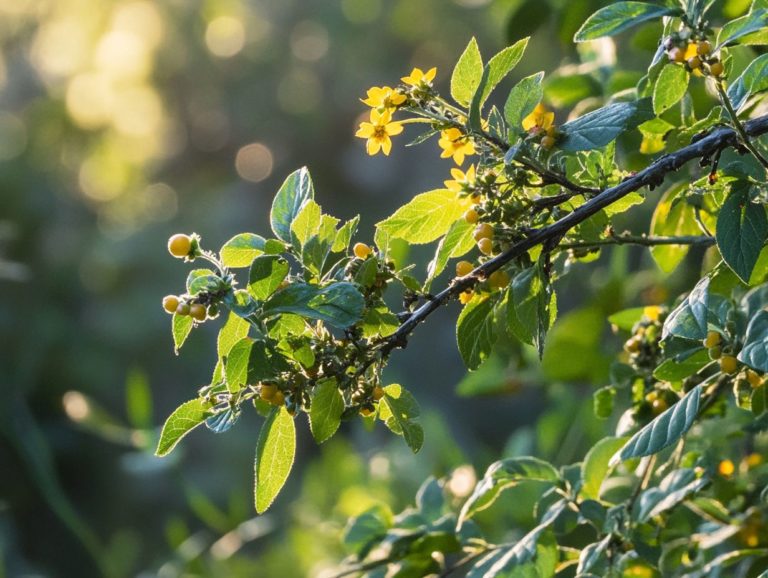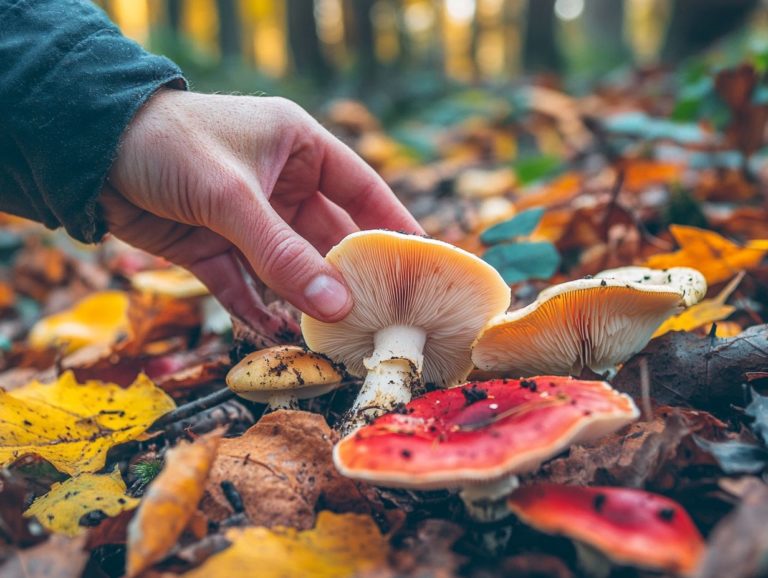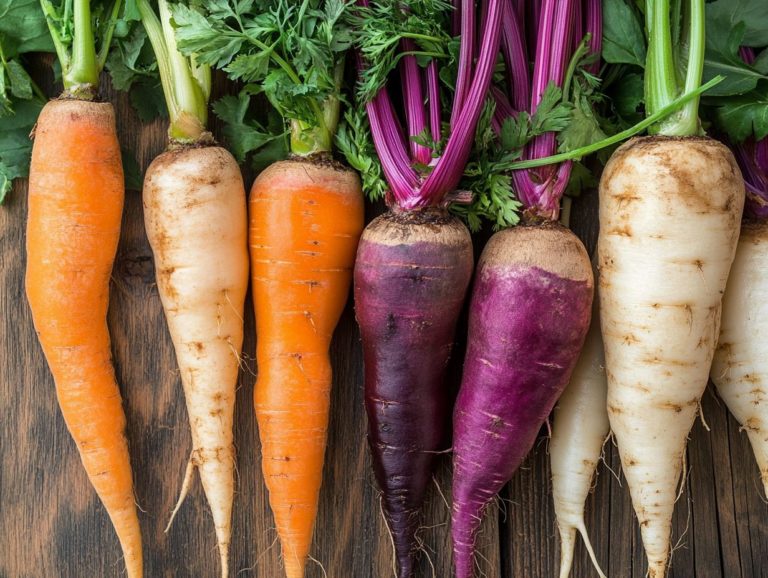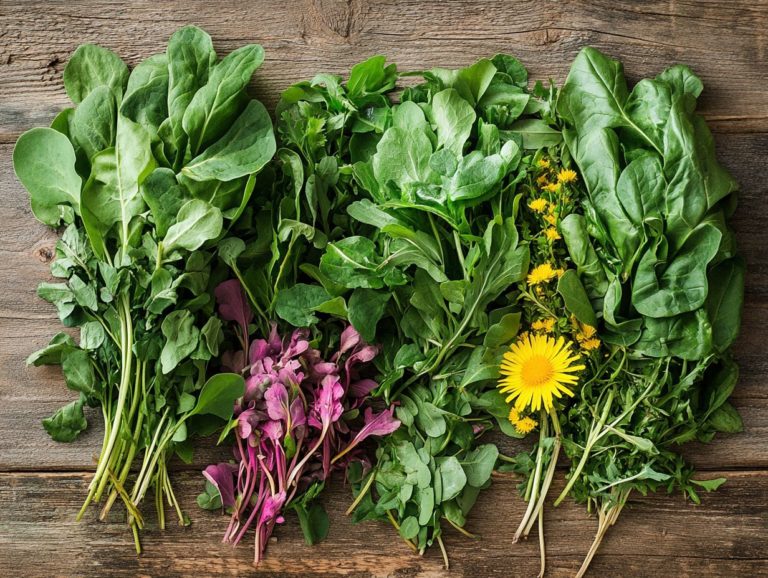Identifying Edible Seaweeds: A Quick Guide
Seaweeds are far more than mere ocean plants; they are nutritional powerhouses brimming with essential vitamins and minerals. These contribute to their remarkable health benefits.
In this article, you ll explore their health benefits, including the key nutrients they offer. You ll uncover common varieties of edible seaweeds, learn how to identify them, and consider important safety precautions.
Practical methods for preparing and cooking these versatile ingredients, such as seaweed recipes, will be shared. This ensures you re well-equipped to incorporate them into your meals. Whether you re a seasoned chef or a curious eater, you ll discover everything you need to fully embrace seaweeds in your diet.
Contents
- Key Takeaways:
- The Nutritional Value of Seaweeds
- Types of Edible Seaweeds
- How to Identify Edible Seaweeds
- Safety Precautions and Risks
- Preparing and Cooking Edible Seaweeds
- Frequently Asked Questions
- What is the purpose of this quick guide on identifying edible seaweeds?
- Why is it important to correctly identify edible seaweeds?
- How can I identify edible seaweeds in the wild?
- Are all seaweeds safe to eat?
- Can I harvest and consume seaweeds from any body of water, including tidal zones?
- What are some common ways to prepare and cook edible seaweeds?
Key Takeaways:
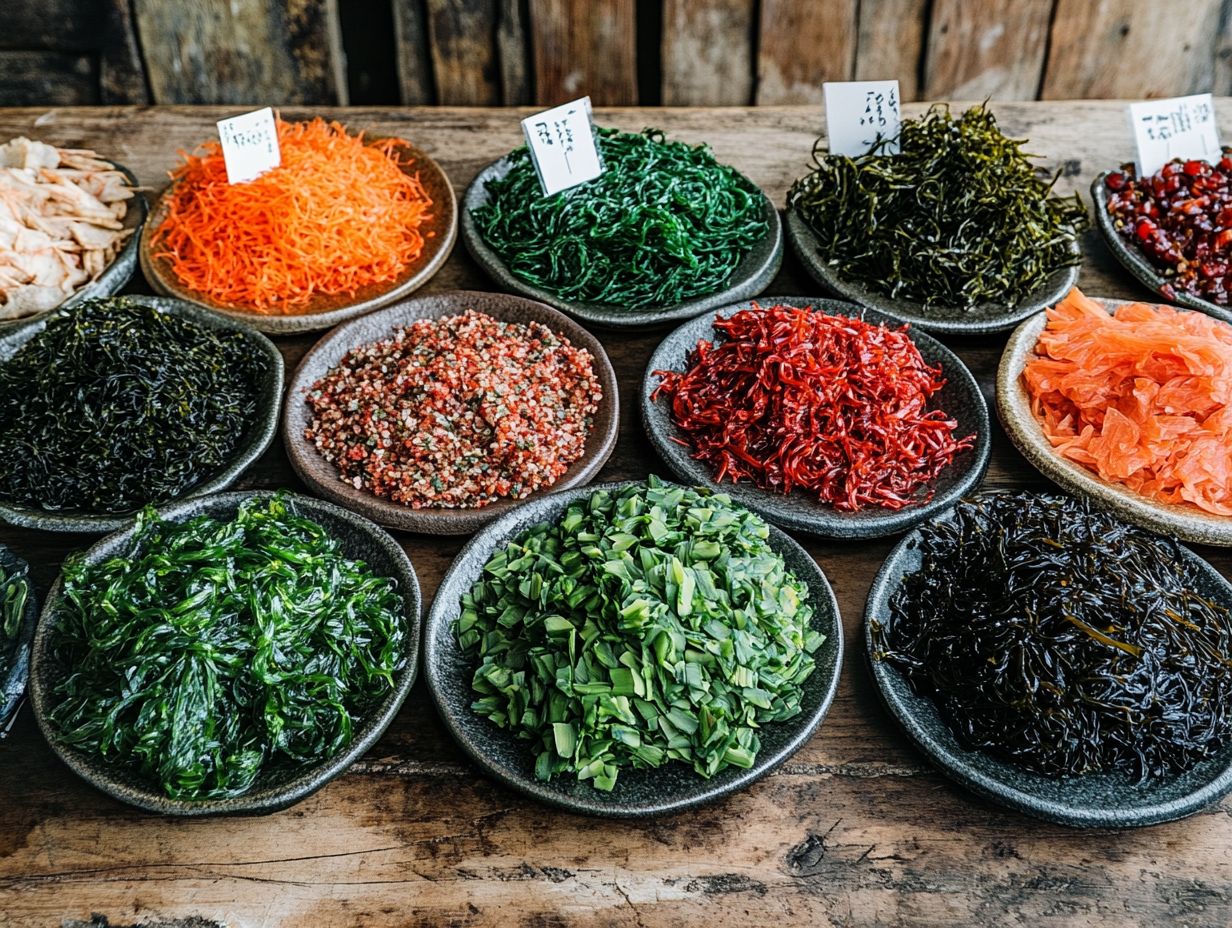
- Seaweeds are highly nutritious and packed with key nutrients such as iodine, iron, and omega-3 fatty acids, making them a valuable addition to any diet.
- Various edible seaweeds have unique flavors and uses in cooking. Common varieties include nori, dulse, and wakame.
- When identifying edible seaweeds, pay attention to their color, texture, and smell. It’s also important to take safety precautions and be aware of potential contaminants and allergies.
The Nutritional Value of Seaweeds
Packed with essential nutrients, seaweeds are a vital part of diets worldwide. They provide numerous health benefits, including high iodine content and vitamins A and C.
Their impressive antioxidant profile enhances overall wellness, making them a staple for anyone interested in food sustainability and marine ecology. Recognizing the nutritional value of seaweeds is essential whether you’re into seaweed foraging or culinary endeavors, as these nutrient-dense organisms play a crucial role in the marine food web.
Key Nutrients and Health Benefits
The key nutrients in edible seaweeds, such as vitamins A and C, iodine, and antioxidants, significantly contribute to your health and well-being.
These remarkable marine plants are also loaded with dietary fiber, supporting digestive health. Compounds like omega-3 fatty acids can help reduce inflammation. Varieties like nori, often used in sushi, and wakame, a staple in miso soup, serve as excellent sources of these nutrients.
Incorporating seaweed into your daily meals is easy consider snacks, salads, or smoothies. This addition introduces delightful flavors and textures while elevating your nutritional intake.
The minerals like calcium and magnesium found in certain seaweeds support your bone health and muscle function, making them a versatile enhancement to your diet.
Types of Edible Seaweeds
Explore the rich flavors of various edible seaweeds, each showcasing distinct flavors and culinary possibilities. Among them, golden kelp truly shines, celebrated for its rich taste and versatility across cuisines.
Common Varieties and Their Uses
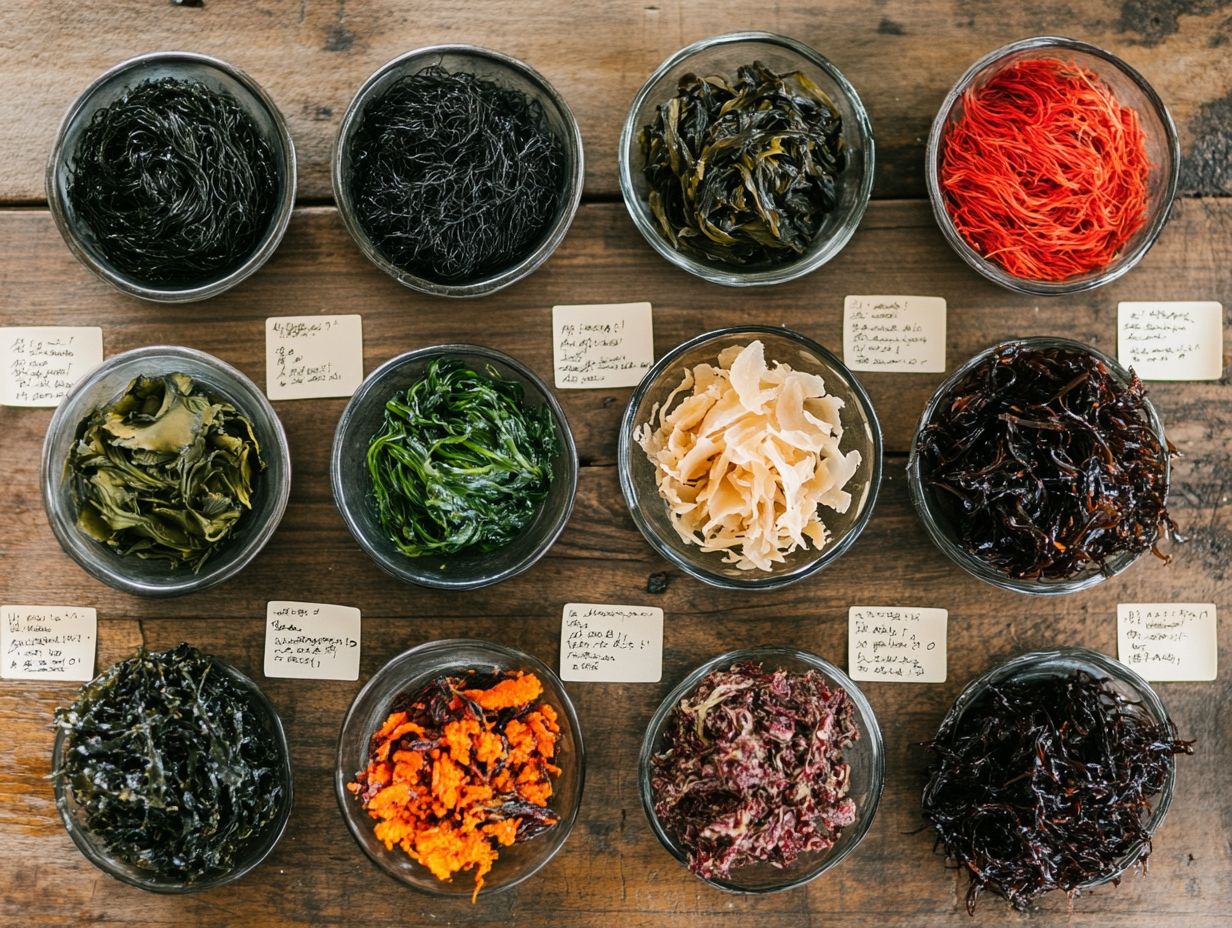
Common varieties of edible seaweeds, such as golden kelp, nori, and dulse, offer unique flavors that enhance dishes in cuisines like Japanese. These seaweeds not only bring distinctive tastes to the table but also improve the nutritional profile of your meals.
Take nori, for example it s celebrated for its role in sushi, providing a subtle umami flavor that s typically toasted to amplify its crispiness. Golden kelp, with its mild sweetness, finds its way into broths and salads, effortlessly complementing other ingredients. Dulse, with its smokier profile, serves as a delightful seasoning for soups and chowders.
These varied applications highlight the importance of seaweeds in enriching both flavor and texture, showcasing their remarkable versatility in traditional culinary practices.
How to Identify Edible Seaweeds
Identifying edible seaweeds, like golden kelp, demands a clear understanding of their physical characteristics along with a deep appreciation for the natural conditions affecting seaweed growth.
This knowledge is crucial for ensuring sustainable practices and fostering ethical harvesting methods.
Physical Characteristics and Tips for Identification
To successfully identify golden kelp and other edible seaweeds, examine their physical characteristics, which vary by species and habitat. You’ll often find them in tidal zones or washed up on the beach.
As you observe these marine plants, pay close attention to their texture; it can range from smooth and slippery to rough and fibrous. The color palette is diverse, showcasing vibrant greens, deep reds, and even striking purples that may shift based on environmental conditions.
Growth patterns also offer valuable clues some species create broad, sprawling mats, while others stand upright with distinct fronds.
For the adventurous forager, shallow waters near rocky outcrops or tide pools are prime spots for discovery. Proper identification is crucial for your safety, as certain varieties can be toxic. This underscores the importance of careful examination before considering consumption.
Safety Precautions and Risks
Engaging in seaweed foraging can be incredibly rewarding, but it s crucial to be fully aware of the safety precautions and risks involved. Understand potential contaminants and adhere to personal use regulations designed to preserve the delicate ecological balance.
Potential Contaminants and Allergies
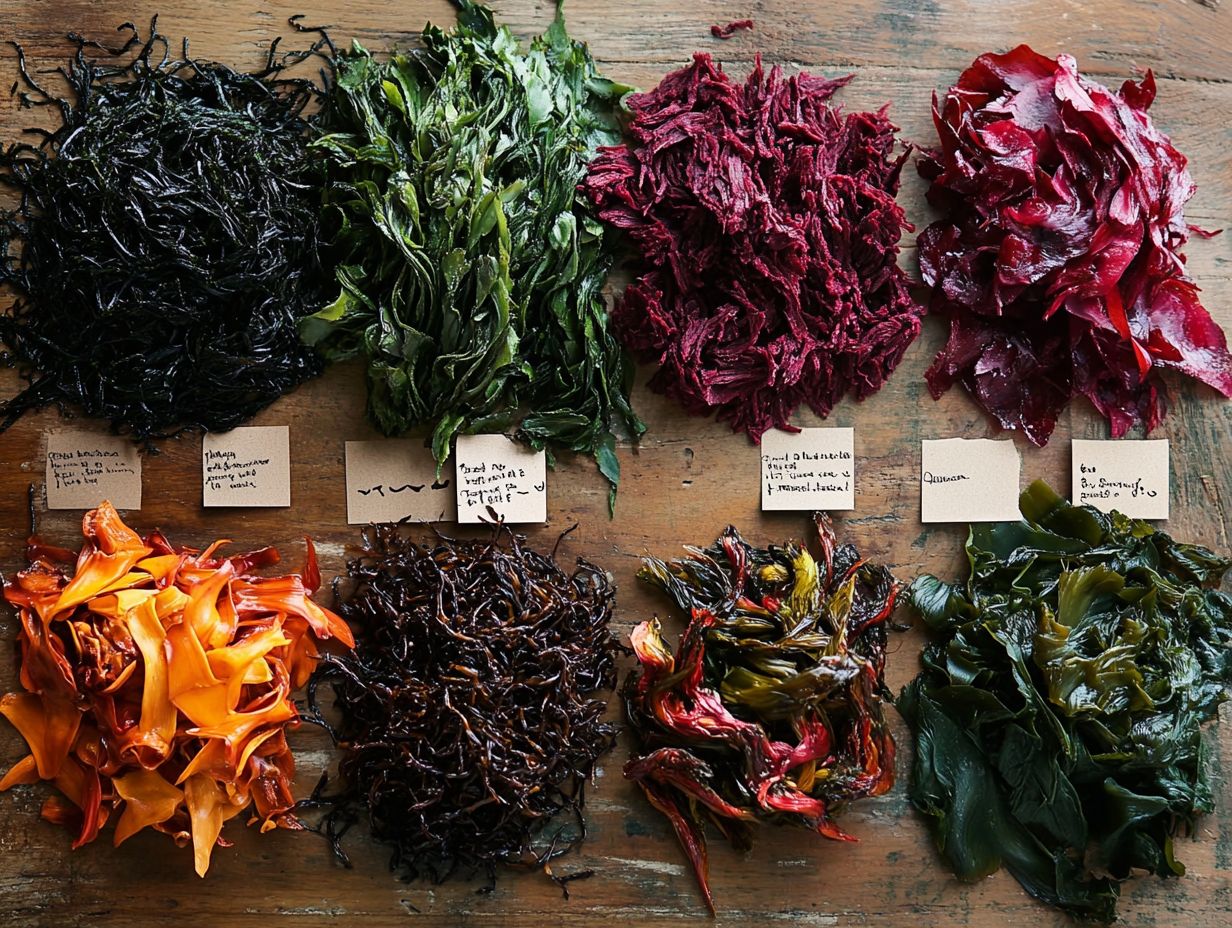
Seaweeds can accumulate potential contaminants from their surroundings, so it s vital to be aware of these risks, as well as any allergies that might arise from consumption.
Heavy metals like lead, mercury, and cadmium can lurk in seaweeds, especially in polluted waters. Ingesting these substances poses significant health risks you want to avoid.
Microorganisms like bacteria and viruses can infiltrate these marine plants too, leading to gastrointestinal distress or even more severe infections.
If you have known allergies to shellfish or iodine, tread carefully; allergic reactions are indeed possible with certain types of seaweed.
To minimize these risks, ensure you only harvest from clean, designated areas. Consult local advisories on water quality to enjoy a safer and healthier foraging experience.
Preparing and Cooking Edible Seaweeds
When you prepare and cook edible seaweeds, you’ll discover a range of techniques that can elevate your delicious dishes. From drying to marination, and even crafting delightful seaweed pickles, these methods enhance flavors and add healthy benefits to your meals.
Methods and Recipes
You ll find a multitude of methods for preparing seaweed, including cooking tips with recipes that range from simple snacks to gourmet creations that showcase the savory taste found in various seaweed types. This versatility invites both chefs and home cooks to experiment with an array of textures and flavors.
Some popular recipes include:
- Seaweed salad, where thinly sliced greens are tossed with a tangy dressing for a fresh taste.
- Ramen garnished with nori, infusing the broth with a delightful sea essence.
- Miso soup, which benefits richly from the depth added by kombu.
Embracing traditional dishes like sushi highlights the unique textures of seaweed while amplifying its umami profile through thoughtful ingredient pairings. By using different cooking techniques like toasting or steeping you can elevate the inherent flavors, making seaweed a celebrated ingredient across various culinary traditions.
Frequently Asked Questions
What is the purpose of this quick guide on identifying edible seaweeds?
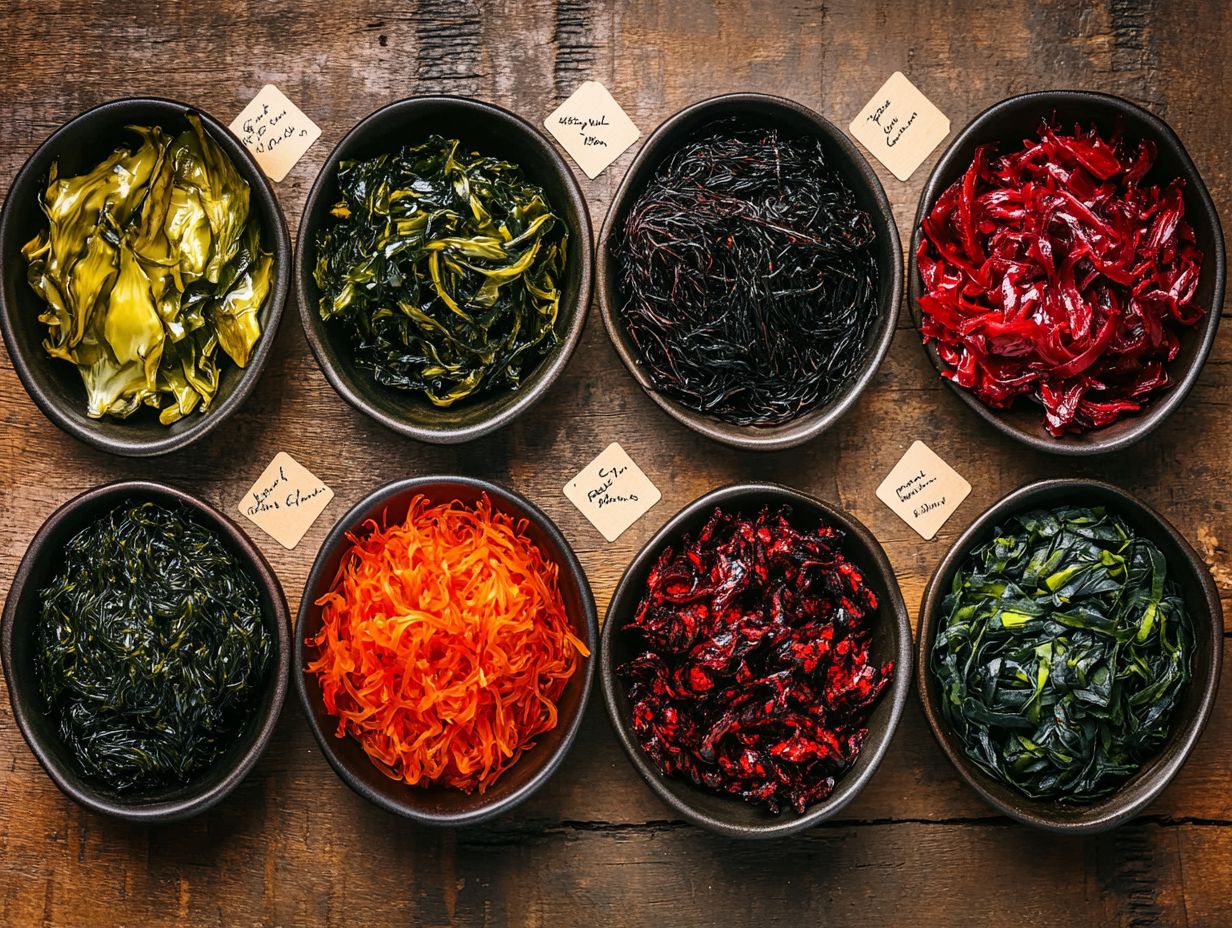
This guide offers a simple resource for identifying safe edibles like edible seaweeds. They are nutritious and flavorful, making them great for cooking.
Why is it important to correctly identify edible seaweeds?
It s important to identify edible seaweeds properly. This helps avoid potential health risks and ensures you are consuming safe and nutritious foods. It also supports sustainability and marine ecology.
How can I identify edible seaweeds in the wild?
One way to identify edible seaweeds is by familiarizing yourself with their physical characteristics, such as color, shape, and texture. Understanding their habitats is also crucial. You can consult a reputable guidebook or forage with an experienced forager.
Are all seaweeds safe to eat?
Be careful! Not all seaweeds are safe to eat. Some can be toxic or contaminated. Always ensure you know what you re consuming, and only eat seaweeds that have been positively identified as edible.
Can I harvest and consume seaweeds from any body of water, including tidal zones?
No, only harvest and eat seaweeds from clean, non-polluted waters. Avoid areas near industrial sites, sewage outlets, or heavily trafficked areas.
What are some common ways to prepare and cook edible seaweeds?
Get creative with edible seaweeds! They can transform salads, soups, stir-fries, and sushi into exciting dishes. Don t forget to sprinkle them into smoothies for a nutrient-packed boost!

